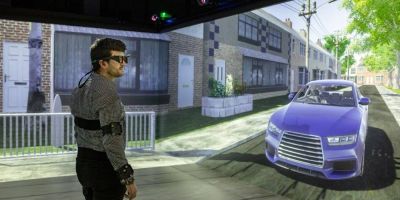Kids plan their town
At the University’s Be Curious Festival of Science on 19th March members of ITS, with a little help from others, ran a creative stall: Walking and cycling in your neighbourhood: plan your town.
We asked people to design a neighbourhood so that they could do more on foot and by bicycle, and so that motor transport got less in the way of other activities like getting safely to school and playing in the street. People could re-plan roads, footways and cycle-ways and change locations of new schools, workplaces and shops so that they are in better walking and cycling reach of old and new homes. At this event, most of our planners were children under 12, and their plans were much more thoughtful, creative and exciting than we could have hoped. We had traffic calming, cycle parking and pedestrian zone around a school which itself had a plasticine and cardboard forest planted around it, new pedestrian and cycling bridges and luminous new footpaths to make connections which had been missing, reminders to slow down for cats, and many speed reductions and play streets.
The activity was based on research from several major research projects involving ITS. All of which add to evidence that increasing active travel needs more than telling people about the benefits of physical activity, improving air quality and reducing carbon emissions. The way in which people travel is influenced by the sorts of activities they do and expect to do, where and when the activities happen. Travel is also shaped by cultural ideas of what is and is not normal and expected, and by physical provision and the built environment. For walking and cycling, evidence suggests that people need to feel safe.
People who organised and ran the activity are Caroline Mullen, Ann Jopson, Ian Philips, Yvonne Barnard for ITS. Phil Champion also helped run the event, and Penny Mullen created the idea for model pedestrians, cyclists and trees.
Related research:
- DEMAND Centre: Dynamics of Energy, Mobility and Demand
- Understanding Walking and Cycling (2008-2011, funded by EPSRC)
- Disruption Project




